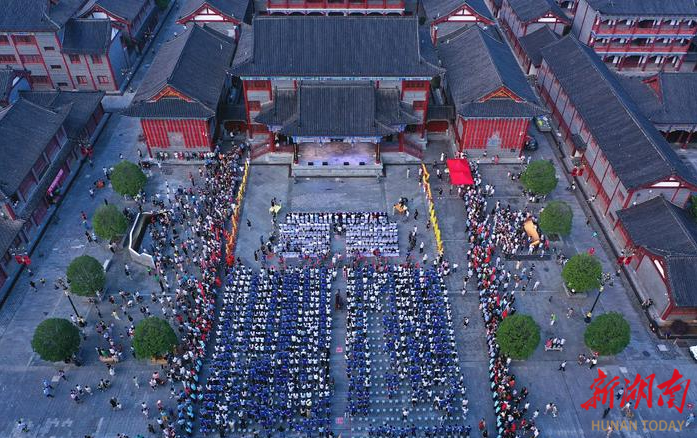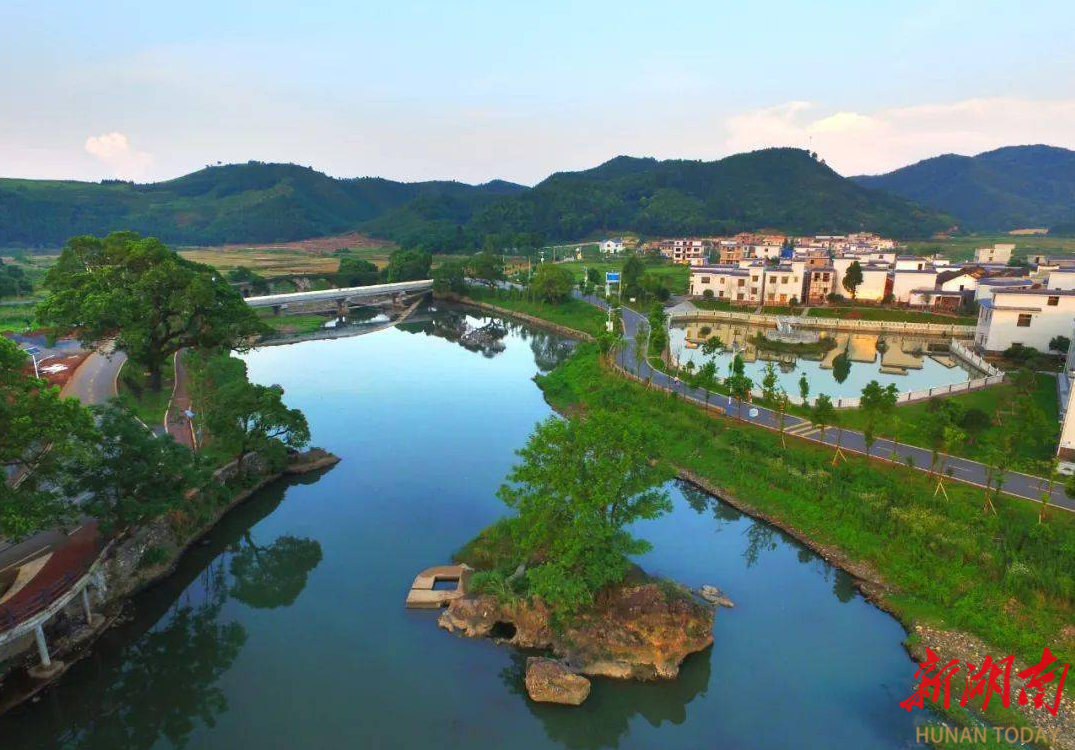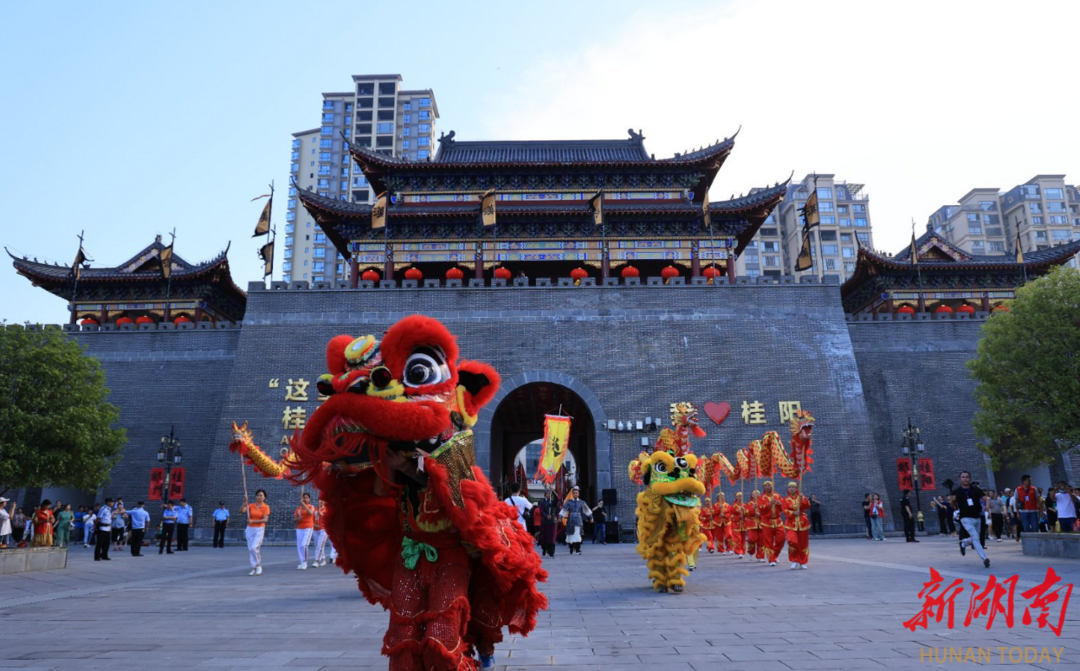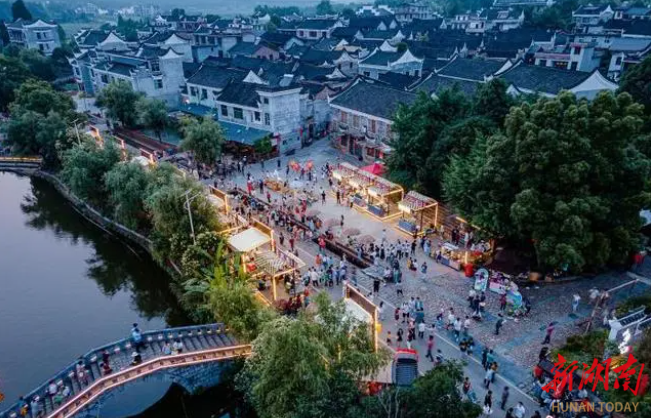Chenzhou emerges as popular destination for educational travel
2023-06-16
Educational excursions are experiencing a surge in popularity, emerging as a prominent highlight within Chenzhou City’s tourism market this year.
Since the onset of June, the thematic exhibition titled “The Warmth of Half a Quilt” at Shazhou Village has been attracting daily cohorts of thousands, comprising students hailing from primary and secondary schools nationwide. On June 5, over 800 faculty members and students from the Shenzhen No. 2 Vocational and Technical School in Shenzhen City of Guangdong Province descended upon Chenzhou City, embarking on an immersive five-day journey of intellectual exploration.
Meanwhile, educational institutions from the Guangdong-Hong Kong-Macao Greater Bay Area have initiated preparations for organizing subsequent waves of study groups to venture forth into the realms of Chenzhou City.
Seizing the opportunity presented by this burgeoning trend, the Chenzhou municipal government recently convened a site observation and promotion conference, focused on the progressive development of the Xihe River Rural Revitalization Demonstration Belt, effectively unveiling the region’s fresh epithet as an esteemed destination for enriching “educational travel”.

Agricultural-tourism integration
Since the advent of early summer, the banks of the Xihe River have been abuzz with vibrant activity. At Wazao Village in Suxian District, a mesmerizing display of cultural heritage awaits as students delve into the meticulous craft of fish rice noodles production.
With the right hand operating the millstone and the left hand putting rice into the millstone hopper, a velvety concoction of rice milk cascades forth, breathing vitality into an immersive pedagogical curriculum.
Wazao Village stands as the birthplace of the provincial-level intangible cultural heritage “Qifengdu fish rice noodles” handcrafted technique. Presently, the hallowed precincts of the intangible cultural heritage workshop bear witness to an annual influx of over 200,000 visitors, including more than 20,000 students engaging in educational sojourns.
At Hexie Village in Guiyang County, ancestral abodes have been tastefully repurposed into enchanting sanctums for showcasing intangible cultural heritage marvels like traditional papermaking and letterpress printing.
Embracing the allure of the forsaken Chenzhou-Jiahe Railway and derelict factories, a celestial encampment under the stars takes shape, accompanied by captivating ventures known as the “Time Train” and the “Life Station”, collectively beckoning hordes of youthful enthusiasts to venture into the rustic idyll. Huang Kai, secretary of Hexie Village, attests that visitor footfall during the May Day holiday exceeded 100,000, with particular fervor surrounding parent-child educational voyages.

As the wheels of progress turn, forging a deeper integration of agrarian pursuits and touristic splendor, a cornucopia of novel rural consumption experiences sprout forth. Wang Jiawen, an official of the Rural Revitalization Bureau in Chenzhou City, expounds on the 2022 “No.1 central document” which embraces qualifying rural tourism projects, duly recognizing them as indispensable foundations for scientific education and hands-on agricultural experiential bases within the purview of primary and secondary schools. The resulting policy dividends continue to unfurl their transformative potential along the picturesque stretch of the Xihe River.
Spanning a majestic expanse of 142 kilometers, the Xihe River gracefully meanders through four counties (districts), namely Guiyang, Beihu, Suxian, and Yongxing, traversing nine towns (subdistricts) and embracing 52 administrative villages. In early 2022, Chenzhou boldly inaugurated three transformative years with lofty aspirations to cultivate the Xihe River area as an acclaimed national exemplar of rural renaissance and a coveted haven for leisurely countryside exploration.
Buoyed by over a year of relentless endeavor, the rustic hamlets fringing the Xihe River now bear testament to resplendent rural habitats and enhanced public infrastructure. Whether within the embrace of the cherished historical sites or the revered precincts of intangible cultural heritage workshops or amidst the verdant fields and resplendent natural panoramas, each destination has emerged as a veritable treasure trove of experiential wisdom, forever imprinting its indelible mark upon the hearts and minds of all who venture forth.
Tourism resources connection
“In Chenzhou, we have all types of tourism resources one would expect, except for deserts,” remarked Cao Zhengke, director of Chenzhou Municipal Bureau of Culture, Tourism, Radio, Television, and Sports. Despite being a relatively nascent market for educational travel compared to well-established regions like the Guangdong-Hong Kong-Macao Greater Bay Area, Chenzhou has laid a solid foundation for creating exceptional “mobile classrooms”.
On May 8, the municipal education department unveiled a curated selection of study program itineraries under the theme “A Million Students Engage in Study Programs, Boosting the Tourism Development Conference”, seamlessly connecting all tourism resources.
Amidst the resounding beats of drums on the afternoon of June 5, the expansive Guiyang Cultural Park spanning an area of 2,160 mu (144 hectares) hosted a grand “gate-opening” ceremony, eagerly awaiting the arrival of over 800 teachers and students from the Shenzhen No. 2 Vocational and Technical School.

Guiyang County is hailed as an extraordinary “living relic” of ancient Chinese counties, having traversed a storied history of nine administrative divisions, a distinction rarely found across the nation. Zhang Xiuhong, dean of students in Shenzhen No. 2 Vocational and Technical School, attested, “Through immersive experiences, we have discovered that the millennial reputation of this ancient county is well-deserved. Educational travel is not a spur-of-the-moment journey but a meticulously planned odyssey through a mobile classroom.”
Notably, in the pursuit of crafting distinctive study program routes, Guiyang Cultural Park will establish collaborative ties with the Chongling National Wetland Park and the Xihe River Rural Revitalization Demonstration Belt, forging synergistic links that transcend boundaries.
Featured products development
“Educational travel in China has reached a stage where the competition lies in the quality of its offerings,” remarked Zhang Yang, an expert from the China Tourism Academy. It is no longer merely about providing students with a glimpse and a tour but rather about creating opportunities for active engagement, hands-on experiences, and cognitive stimulation.
The robust demand for educational travel has garnered significant attention from local governments. Li Hongchun, director of the municipal education department, highlighted the substantial support for the development of educational bases. Currently, Chenzhou boasts 41 municipal-level educational bases and three municipal-level educational camps. The city has welcomed over 200,000 participants in educational practice activities, with more than 30,000 of them hailing from beyond Chenzhou.

With meticulous attention to detail, Chenzhou has curated educational travel products that delve deep into the cultural heritage of the region. Beihu District has joined hands with Xiaobu Ancient Village, Yuanhengjia Education Park, and Zhiqing Homestay Cluster, integrating intangible cultural heritage creative products, immersive performances, and distinctive culinary experiences. Making its debut during the Children’s Day period, the “Xiaobu 1423 Reading and Farming Market” captivated visitors with its unique charm.
In Guiyang County, the Xianglong Aerospace Science Popularization Experience Center showcases meticulously crafted models of the Long March series of carrier rockets, armed helicopters, and fighter jets. Visitors can also immerse themselves in virtual reality projects that simulate space exploration and partake in physical fitness training programs inspired by the rigorous regimens of astronauts.
Preserving the heritage of traditional villages in southern Hunan is akin to preserving history itself, while also transforming them into dynamic classrooms. Chenzhou has taken proactive measures to restore and enhance more than 10 key cultural heritage sites along the Xihe River, including ancient opera stages. Furthermore, the city plans to revitalize old houses through initiatives such as introducing courses on paper-cutting, pottery, and coin casting, allowing students to immerse themselves in the captivating allure of intangible cultural heritage.




